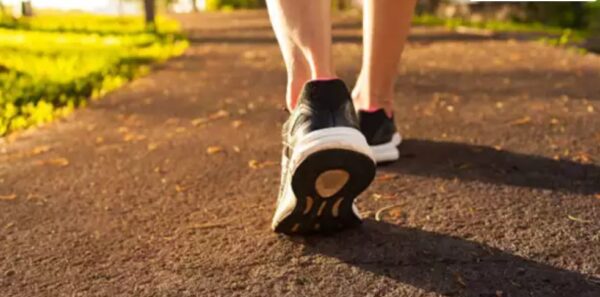Lifestyle
9 secrets about walking gym trainers will not tell you

Walking is one of the most underrated forms of exercise, yet it provides incredible health benefits when done correctly.
While gym trainers often push high-intensity workouts and complex gym routines, they rarely highlight the true power of walking.
If done strategically, walking can help you burn fat, improve cardiovascular health, tone muscles, and even boost mental well-being.
1. Walking burns more fat than you can imagine
A brisk 45–60-minute walk can burn up to 300-400 calories, depending on your pace and body weight.
Some think that high-intensity exercises alone burn fat, but walking continuously at a steady pace within the fat-burning zone (50-70% of your max heart rate) actually burns stored fat effectively. In contrast to high-intensity exercises, which use carbohydrates to provide a burst of energy, walking lets your body use fat as its energy source.
For maximum fat burning, walk at 5-7 km/h and maintain a steady heart rate in the fat-burning zone.
2. Walking on an empty stomach in the morning burns more fat
For effective fat loss, walk for 30-45 minutes on an empty stomach in the morning. Drink water before your walk to stay hydrated.
One of the best-kept secrets in the fitness world is fasted walking—walking on an empty stomach, usually in the morning. When you walk before eating breakfast, your insulin levels are low, and your body taps into fat stores for energy instead of burning recent food intake
3. Walking tones leg muscles
Gym trainers often claim that walking doesn’t build muscle, but the truth is, walking engages and tones multiple muscle groups, including your calves, hamstrings, quadriceps, and core muscles. Walking uphill or on uneven terrain enhances muscle activation and improves lower-body strength.
4. Walking reduces back pain
Keep your back straight, shoulders relaxed, and core engaged while walking. Avoid looking down at your phone, as this strains your neck.
Poor posture and back pain are common issues, especially for those with sedentary jobs. Walking naturally improves spinal alignment, strengthens the lower back, and reduces stiffness. Unlike running, which puts pressure on joints, walking gently strengthens the core and stabilizes the spine, easing discomfort.
5. Ever heard of interval walking? It can burn more calories
A 30-minute interval walk means 5 minutes of warm-up (slow pace), 2 minutes of fast walking, 1 minute of slow walking, repeating the fast-slow cycle 5-7 times and 5 minutes of cool-down (slow pace).
Gym trainers emphasize treadmill workouts, but few talk about interval walking, which alternates between fast and slow walking to boost calorie burn. Interval walking increases cardiovascular endurance and accelerates fat loss
6. Walking can reduce cravings and emotional eating
One hidden benefit of walking is its capacity to control hunger hormones and suppress sugar cravings. A quick 10-15 minute walk can calm the mind, lower cortisol, and put you in a better mood so you are less inclined to overeat.
The next time you crave, take a quick 10-minute walk to reboot your brain and avoid emotional eating
7. Walking barefoot has additional advantages
Walking barefoot, particularly on sand or grass, makes foot muscles stronger, enhances balance, and diminishes joint stress. Most contemporary shoes possess cushioned soles that gradually weaken the muscles in the feet.
Walk barefoot on soft areas such as grass or sand for 10-15 minutes a day to enhance foot strength and joint stability.
8. Walking in nature is a mental health booster
Whenever possible, choose park trails, beaches, or nature paths for walking to enhance the mental and emotional benefits.
Studies show that walking outdoors, especially in green spaces, significantly reduces stress, anxiety, and depression compared to walking in a gym. Fresh air, natural sunlight, and scenic views boost serotonin and dopamine levels, improving overall mood and mental clarity.
9. Walking can slow down aging
Walking daily enhances circulation, lowers inflammation, promotes skin health, and increases longevity. In contrast to high-impact activity that may result in joint degradation, walking maintains muscle mass and improves cardiovascular health without overexertion.
To achieve maximum anti-aging effects, add walking to hydration, a healthy diet, and strength training twice weekly.










